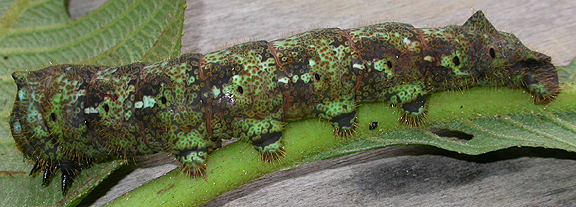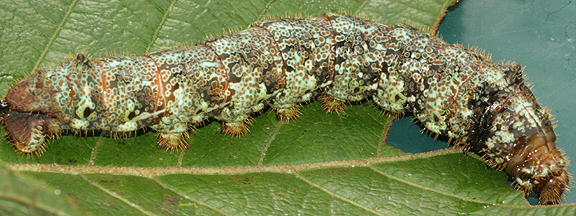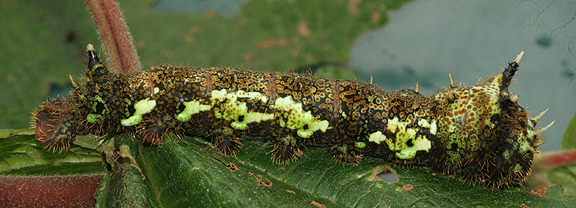Host plants |
Actinidaceae: Saurauia sp.,Cecropiaceae: Pourouma bicolor, Cunoniaceae: Weinmannia sp.,Ericaceae: Psamisia sp. Hydrangeaceae: Hydrangea peruviana, Malvaceae: Wercklea sp., Urticaceae: Miriocarpa sp., Bohmeria sp.Urticaceae: Boehmeria bullata.
|
Observations and Comments |
This genus has been difficult to separate into species because this genus is difficult to rear and we have not been able to check the reliability of the larval characters we use to separate the caterpillars against adult specimens. Out of 53 collections for the genus we have reared only 3 adults and 1 parasitoid. Difficulty rearing caterpillars to adulthood in bags often indicates that the species being reared normally pupates in the ground or in leaf litter.
There are two common early instar morphotypes that may represent two species or more. The later instars are likewise somewhat different which may represent a couple of highly variable species or several species. There are at least 7 species of Arsenura reported from the Napo valley by Lemaire. |





